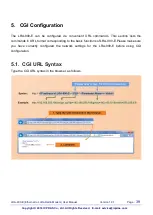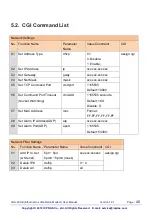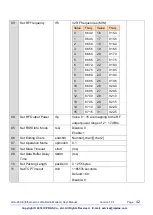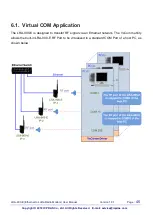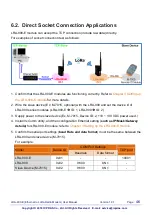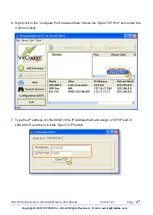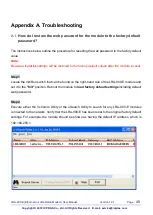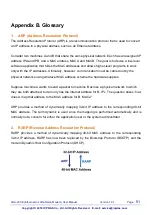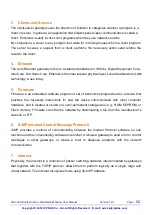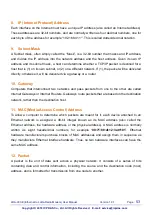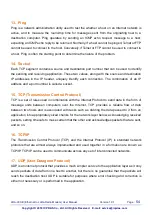
LRA-900-E (Ethernet to LoRa Radio Modem) User Manual
Version 1.0.1
Page
:
51
Copyright © 2018 ICP DAS Co., Ltd. All Rights Reserved E-mail: service@icpdas.com
Appendix B. Glossary
1. ARP (Address Resolution Protocol)
The Address Resolution Protocol (ARP) is a telecommunication protocol that is used to convert
an IP address to a physical address, such as an Ethernet address.
Consider two machines A and B that share the same physical network. Each has an assigned IP
address IPA and IPB, and a MAC address, MACA and MACB. The goal is to devise a low-level
software application that hides the MAC addresses and allows higher-level programs to work
only with the IP addresses. Ultimately, however, communication must be carried out by the
physical networks using whatever MAC address scheme the hardware supplies.
Suppose machine a wants to send a packet to machine B across a physical network to which
they are both attached, but an only has the Internet address for B, IP
B
. The question arises: how
does A map that address to the MAC address for B, MAC
B
?
ARP provides a method of dynamically mapping 32-bit IP address to the corresponding 48-bit
MAC address. The term dynamic is used since the mapping is performed automatically and is
normally not a concern for either the application user or the system administrator.
2. RARP (Reverse Address Resolution Protocol)
RARP provides a method of dynamically mapping 48-bit MAC address to the corresponding
32-bit IP address. RARP has now been replaced by the Bootstrap Protocol (BOOTP) and the
modern Dynamic Host Configuration Protocol (DHCP).



